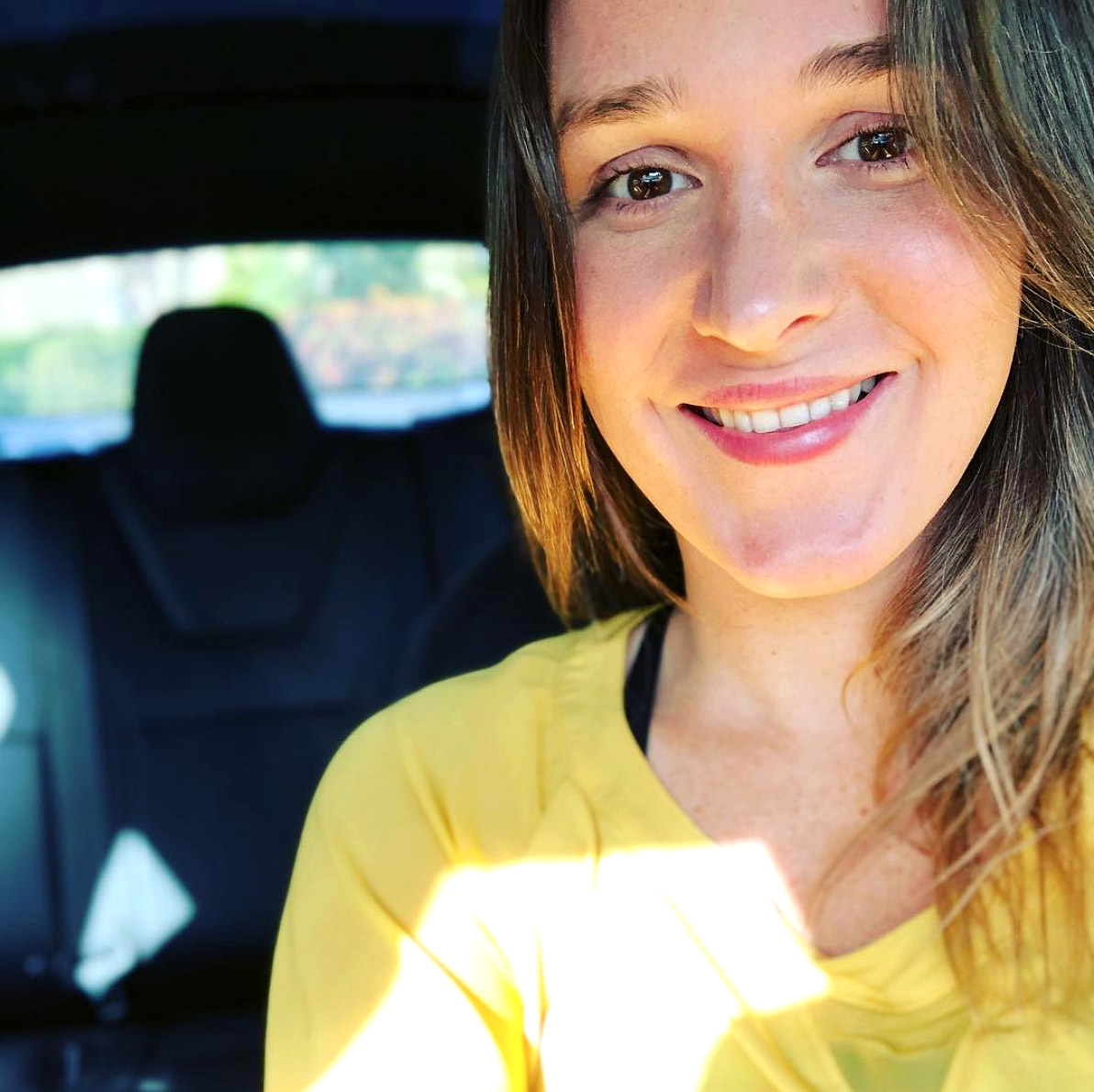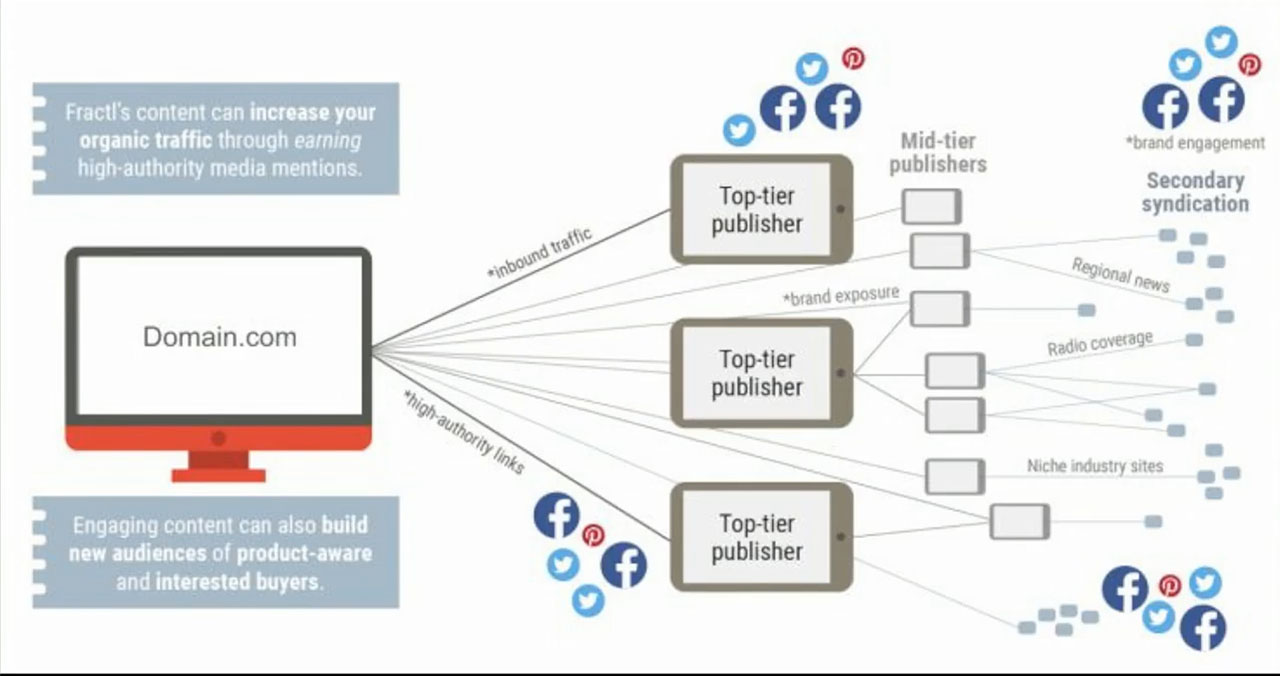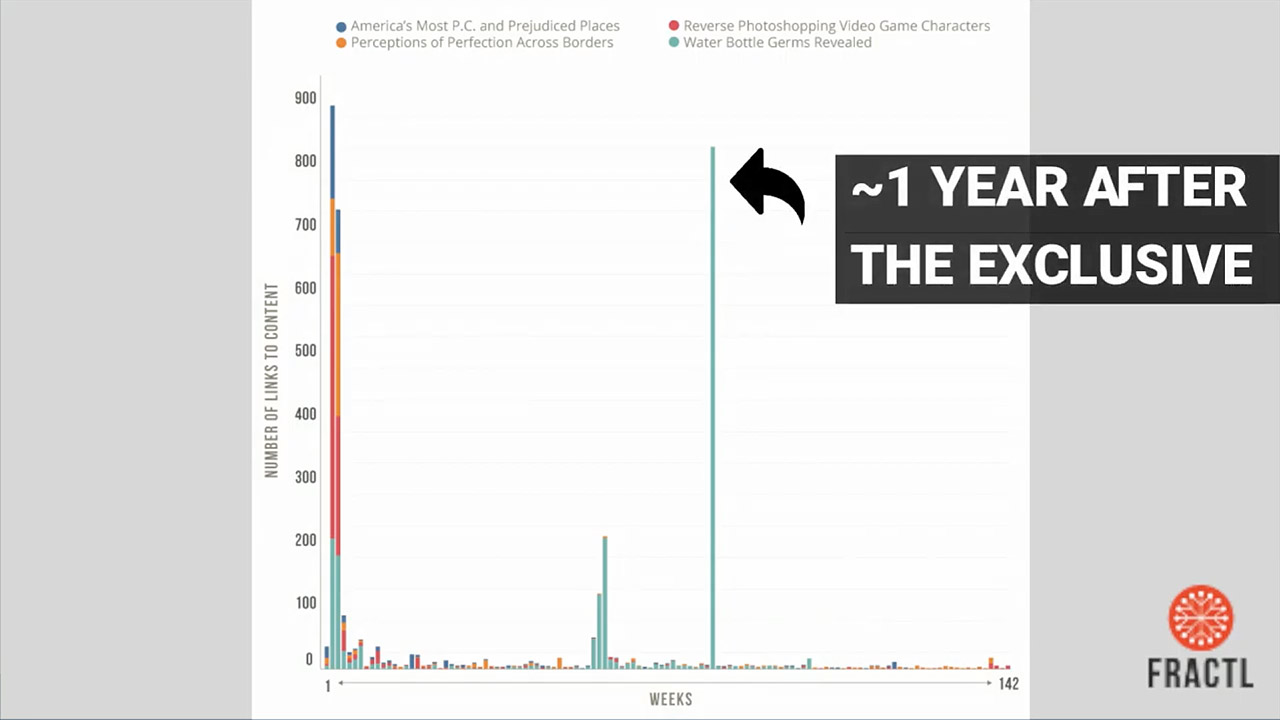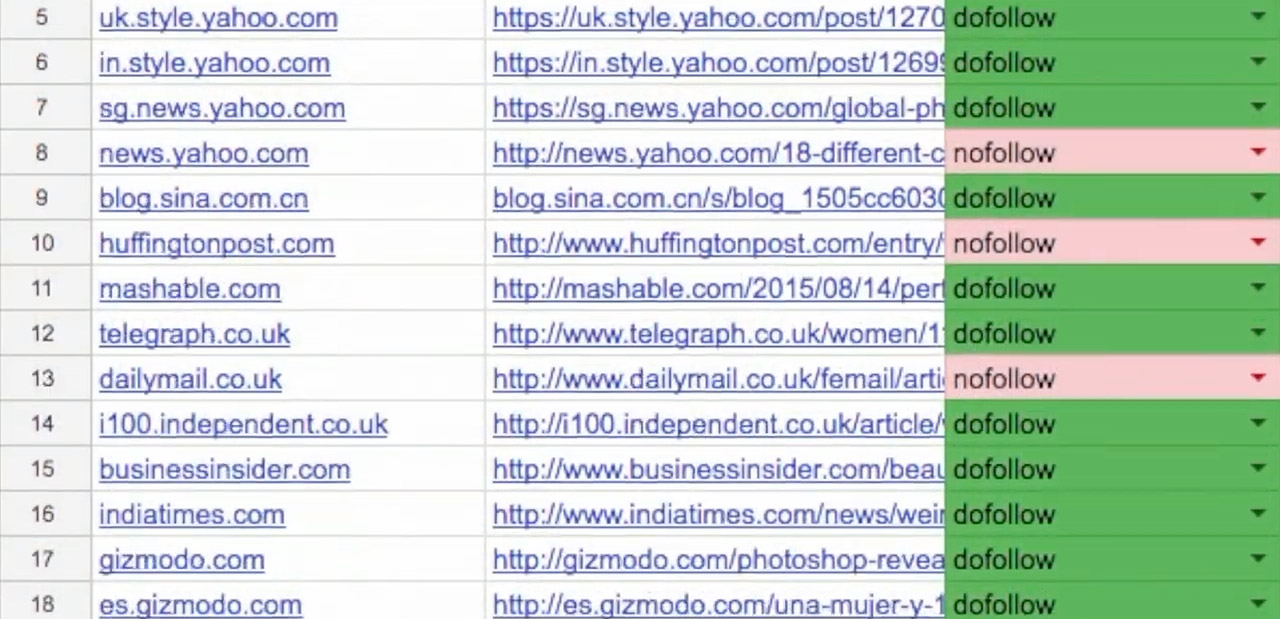In Content Marketing
For content marketing campaigns that earn mainstream publisher pickups, there is often a multi-year long tail of links that are built organically without any additional outreach beyond the first month.

Co-Founder, SVP of Creative

We are going to be talking about our latest research post on Moz, which was published in August, called “The long-term link acquisition value of content marketing”. This research is really interesting and explains that – when measured over the long term – the ROI of content marketing is many times more than what was previously thought.

What inspired us to start to measure the content marketing campaigns
We typically do reporting to our clients on the number of pickups, the overall domain authority, the number of social shares at any piece of content that we promote to talk to your publishers over that first month, and then it's “out in the ether” for the next year, two years, five years, ten years, and we never report on the additional value created by those pieces of content and the additional links, and Domain Authority, and social shares that they accumulated over that time period.
We were really curious to understand how much value is really generated during that first month that we report on, and how much value it's generated after that first month. We found that actually half the value is created after that first month over the course of the next one to two years. The bulk does come in the first month, but there's still a ton of value to be realized that we've actually never been reporting on to our clients that they enjoy it with the work that we do for them. That is really interesting because clients aren't really aware of the how well their campaign does after we report on it.
They will see the organic ranking improvements that are generated by those results, but it's not something that we report on, or that we're really able to report on in the long term. Putting an actual number to it was something that we really wanted to do.
How did we go about conducting all of this research
It's a pretty labor-intensive process – which is why we typically spend the first month reporting, and then, after that we don't anymore. In this case we were looking at two different types of links: direct links from publishers to our client site and also secondary links (other sites linking to the publishers’ content) that then linked to our client site. It's kind of a two-tiered approach, and because of that, it was difficult to use manual methods to aggregate all of those links, since a lot of them were secondary links.
When we gather all the data and had it right in front of us…
I think we were all really surprised that it was at least the amount of value that was created in the first month was created throughout the next six months to two years spending on the campaign. Another thing that really surprised us was that there were often instances where there were secondary “explosions” of sharing happening. Well past one month you might have a mainstream publisher who again picked up the story after seeing it randomly, or just thinking that it might make a good story because they came across it, and then that would cause another chain reaction of downstream syndications and would result in (sometimes) value rivaling what we saw in the first month.
There were occasions when that happened. It was a little bit more unusual to see that, but with some of the most major campaigns that was pretty surprising, that huge spike several months after the exclusive went live. That actually happened with perceptions of campaign for super drug. That was a really good example. I think the reason for it is because it's a very evergreen piece of content around body image, and so it didn't have a time limit on how interesting people found it.
Deep dive
For the study we measured for content marketing campaigns that we produced on behalf of our clients. One of the four that we profiled was a campaign called “Perceptions of perfection”, and it was a cross-cultural look at beauty norms. We hired designers from dozens of different countries to recreate the same female model using Photoshop in whatever they perceived to be the ultimate beauty standard for their country, and I think the reason it did so well was first that it was extremely visually impactful, second – it gave really interesting deep insight into cross-cultural differences, and then, lastly, it touched on a very emotional topic of body image and revealed something that wasn't really out there before.

I think it was a combination of all of those factors, and then the reason that I think it did well in the long term was because it's an evergreen topic, it's something that is emotionally resonant - no matter when it's done, essentially. I think that was really the totality of the reasons for its success, so initially this campaign earned 485 dofollow links in the first month or so. We measured the success and then we stopped measuring the success, and then when we went back recently and looked at all of the backlinks and mentions that had earned over two years. We saw roughly double the number of additional dofollow links, and then similarly with secondary links to those primary pick-up stories. Even since the articles come out, it's accumulated even more, so it's just continues to dofollow links from high Domain Authority sites, and we expect it to for a while.

The main takeaway from conducting this research
I would say that it takes more than just a month to realize the full value of a successful content marketing campaign, and that any estimations of ROI should be done on a six-month year-to-year basis to really understand, was putting the money into this type of marketing activity worthwhile or not. From what we found is for successful campaigns the ROI is typically 2x what you see at one month, which means that the cost-per-link or cost-per-dofollow depending on what you're measuring is roughly half what you would have otherwise calculated it to be. The tactic overall is twice as effective as we had initially anticipated it being.

